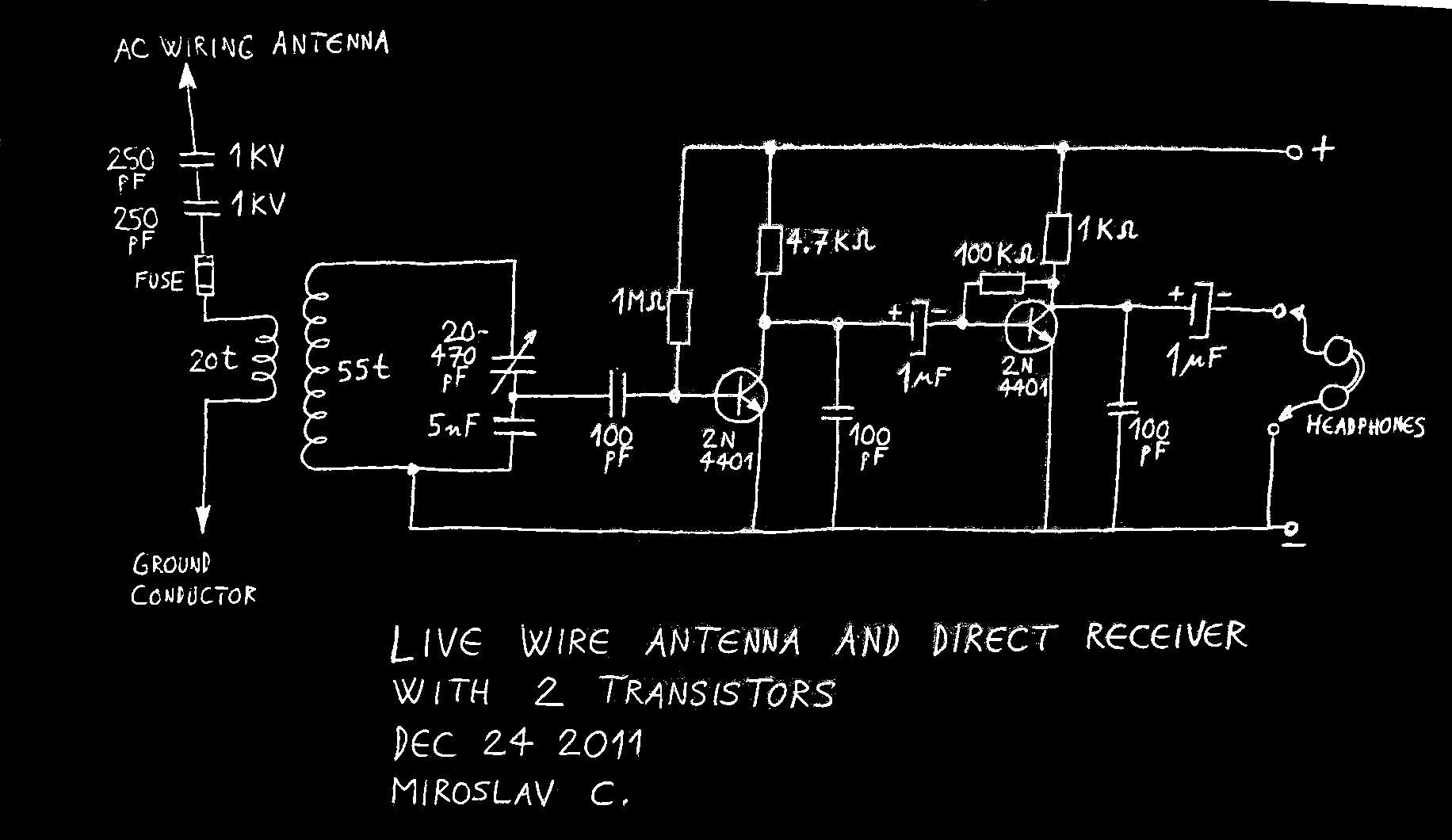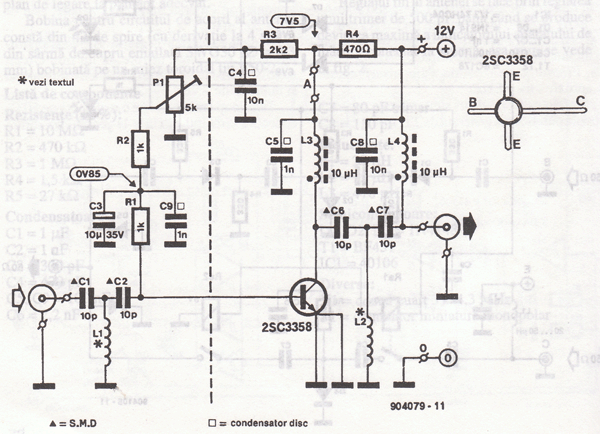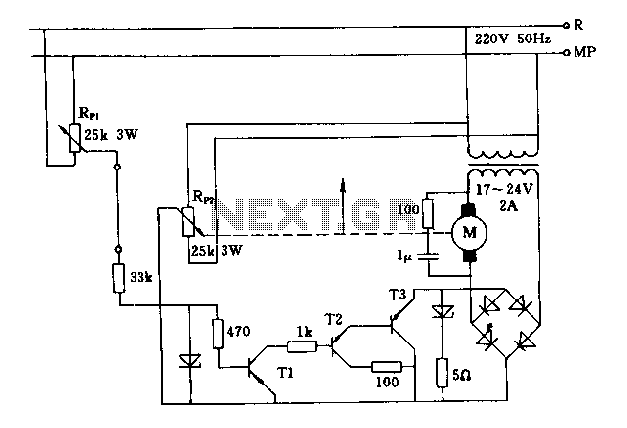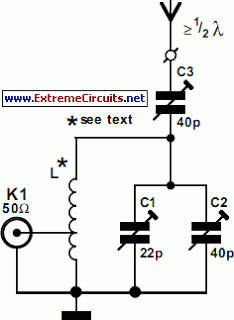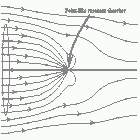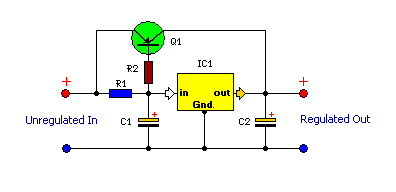
fm antenna booster
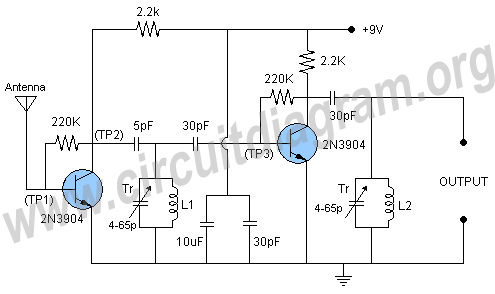
Below is a schematic of a tunable FM antenna booster or FM antenna amplifier circuit that can be utilized to amplify faint or distant FM signals. The circuit employs two transistors to enhance signal gain to an optimal level. The transistors used are general-purpose 2N3904. The circuit incorporates two tunable elements.
The tunable FM antenna booster circuit is designed to improve the reception quality of FM radio signals, particularly in areas where signal strength is weak. The core components of the circuit are two 2N3904 transistors, which are configured in a way that allows them to amplify the incoming radio frequency (RF) signals effectively.
The first transistor functions as a common-emitter amplifier, where the input signal from the antenna is fed into the base terminal. This configuration provides a high input impedance and low output impedance, allowing for effective signal amplification. The amplified signal is then passed to the second transistor, which further boosts the gain.
The tunable aspect of the circuit is achieved through the use of variable capacitors or inductors, which can be adjusted to match the frequency of the desired FM station. This tuning capability allows the circuit to selectively amplify specific frequencies while minimizing interference from other signals.
Additional components such as resistors and capacitors are included in the circuit to stabilize the operation of the transistors and filter out unwanted noise. Proper biasing of the transistors is crucial to ensure they operate within their optimal range, which maximizes gain and minimizes distortion.
Power supply considerations are also essential for the performance of this circuit. A stable DC voltage source is required to power the transistors, typically in the range of 9V to 12V, depending on the design specifications.
Overall, this tunable FM antenna booster circuit is an effective solution for enhancing FM signal reception, making it suitable for use in various applications, including home audio systems and portable FM radios.Below is a schematic of a tunable FM antenna booster or FM antenna amplifier circuit which can be used to amplify the faint or distant FM signals. The circuit is using two transistors to increase signal gain to good level. The transistors are general purpose 2N3904. The circuit is using two tunable 🔗 External reference
The tunable FM antenna booster circuit is designed to improve the reception quality of FM radio signals, particularly in areas where signal strength is weak. The core components of the circuit are two 2N3904 transistors, which are configured in a way that allows them to amplify the incoming radio frequency (RF) signals effectively.
The first transistor functions as a common-emitter amplifier, where the input signal from the antenna is fed into the base terminal. This configuration provides a high input impedance and low output impedance, allowing for effective signal amplification. The amplified signal is then passed to the second transistor, which further boosts the gain.
The tunable aspect of the circuit is achieved through the use of variable capacitors or inductors, which can be adjusted to match the frequency of the desired FM station. This tuning capability allows the circuit to selectively amplify specific frequencies while minimizing interference from other signals.
Additional components such as resistors and capacitors are included in the circuit to stabilize the operation of the transistors and filter out unwanted noise. Proper biasing of the transistors is crucial to ensure they operate within their optimal range, which maximizes gain and minimizes distortion.
Power supply considerations are also essential for the performance of this circuit. A stable DC voltage source is required to power the transistors, typically in the range of 9V to 12V, depending on the design specifications.
Overall, this tunable FM antenna booster circuit is an effective solution for enhancing FM signal reception, making it suitable for use in various applications, including home audio systems and portable FM radios.Below is a schematic of a tunable FM antenna booster or FM antenna amplifier circuit which can be used to amplify the faint or distant FM signals. The circuit is using two transistors to increase signal gain to good level. The transistors are general purpose 2N3904. The circuit is using two tunable 🔗 External reference
